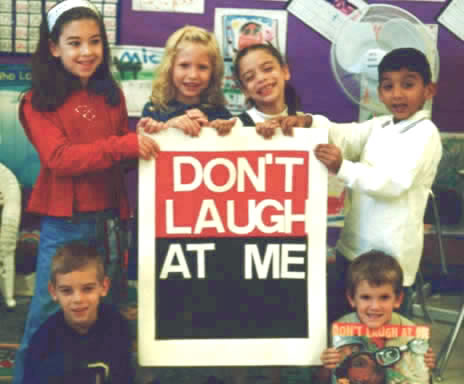
Roadmap to Rigor Rubric NAESP has developed a rubric that will help principals and teachers engage in discussions about rigor and plan for integrating greater rigor into instruction in their schools. While it can be used as an observation and feedback tool, many principals may find it easier to use this tool to help teachers become more aware of the components that facilitate greater rigor.
The rubric addresses higher-order thinking skills, deep understand-ing, problem solving, and metacognition. The roadmap also includes an appendix with an annotated bibliography and additional resources. NAESP also offers Rigor Workshops that explore strategies and processes to help students move to deeper levels of understanding through metacognition, higher level expectations, and problem solving. Level I is basic. Level II provides guidance with use of the Rigor Roadmap. If you are interested in reviewing the Rigor Roadmap and providing feedback to NAESP, or for more information on the workshops, please contact Dr. Christine Mason at cmason@naesp.org. |
|
Don't Laugh at Me
Download a free packet of Peter Yarrow's material here.
Listen to the music class of third graders of Del Norte (Colorado) Elementary sing the title song here.
|
|
Contact Us
For more information on our services and modules or for a free 2-hour consultation, contact Dr. Christine Mason
cmason@naesp.org
toll-free 800-386-2377
or 703-684-3345
To help us meet your needs, please include in your email the answers to the following questions:
1. Primary concern or need:
2. Proposed dates of service:
3. # of teachers:____
4. What you expect from CEI:
|
|
Editor:
Carolyn Lieberg, M.A.
|
|
Visit Our Websites
The Newsletter Archive page on CEI's website contains a library of previous Wow! Ed editions.
Also visit the Publications page on the NAESP website to read additional publications designed to meet the needs of today's school leaders.
|
|
|
|
Dear Educator,
After a summer break, we are back! And just in time to give you some ideas about improving your school climate, reducing stress, and helping kids develop into the people our planet needs. Consider the wars, the unequal distribution of resources, the violence that we see and hear day in and day out on TV, in our media, our computer games, our movies. Are you interested in doing what you can in your school to help our youth of today envision their role for a brighter, more caring tomorrow? If so, there are many, many great ideas and links in this edition.
Over the summer I conducted a focus group with principals on their willingness to conduct research related to compassion (they are very willing!), I participated in an awesome conference, "The Science of Compassion," and I delivered a keynote presentation on "Heart Centered Education" in Finland to the International Symposium on Educational Reform. It was one of the more interesting summers of my life, meeting and connecting with compassionate souls who are set on opening hearts and minds to become greater, more caring human beings. So this fall, in Wow! we will follow up on these themes.
And yes, these do relate to the Common Core and all the other priorities on your plate. If you think not, try this experiment. Consider the words: Courage, Compassion, Consciousness, Community, and Confidence. Write them down, look at them daily for at least 40 days, and see what happens. We will follow up next month with more on the very critical relationship between academic learning and all of this. And within the next month we will have more on our website as we begin to delve more and more deeply into this territory that is so essential to our future. (www.edimprovement.org)
|
 | Compassion in the Classroom:
It Works!
|
By Suzan Mullane, MS.Ed.
Need a compassionate meta-cognitive approach to social emotional learning? Discover Peter Yarrow's, (from the folk-singing trio, Peter, Paul and Mary): "Don't Laugh At Me Curriculum." It's fun and it's free! Why would kids love it? It's infused with: art, music, reflective deep discussions prompts, human bingo games, and curriculum connection ideas that can be woven into the Common Core Standards. The Don't Laugh at Me Curriculum will become a classroom favorite with the added bonus of teaching kids to think about what they "say and do."

Already have a social emotional learning (SEL) program implemented with your health teacher or counselor? Consider Yarrow's program as a supplement for the regular classroom. When everyone participates in the teaching of core values, such as compassion, using multiple mediums and not just specialists, those core values are far more likely to become entrenched in the school community's culture.
A compassionate school community doesn't just happen; it's created. Principals need a plan, a safe harbor for some of the brutal storms that can sadly occur at school. A plan, where every teacher is empowered to create peaceable classrooms, where students do not cruelly use peers as vessels for their own entertainment, or to extract malicious power through bullying.
Need to justify the time for social emotional learning in this testing-crazed culture? It's truly all in the data. Credible research shows that SEL programs, when done with fidelity, are not fluff; they provide the groundwork for learning. What's the connection regarding SEL and brain research? Students who have stressed-out amygdalas from peer harassment are far less likely to have fully functioning working memories and cognitive flexibility.
If children are afraid, lonely or experiencing undue distraction, learning is impeded, they get stuck, and so it is if the classroom has an under-current of tension created by a culture of peer oppression. Furthermore, teachers who have constant interruptions in peer conflicts have less time to teach. Seems obvious. But how can a Yarrow lesson tie into CC?  Briefly, "Don't Laugh at Me" can be connected into literature, non-fiction texts or even primary documents. The "Power Shuffle Lesson" for grades 2-5 for instance can be integrated into a lesson with a unit on the 19th Amendment, The Women's Right to Vote. There are many primary documents from the web related to this theme--themes for close Common Core reading instruction that include complex vocabulary. Consider too, "The Ridicule-Free Zone Constitution of Caring," lesson for grades 6-8. Use it as a prelude to an expository essay on the Freedom Riders, or MLK's March on Washington. Other ideas to infuse SEL to Common Core can be found on the web. Briefly, "Don't Laugh at Me" can be connected into literature, non-fiction texts or even primary documents. The "Power Shuffle Lesson" for grades 2-5 for instance can be integrated into a lesson with a unit on the 19th Amendment, The Women's Right to Vote. There are many primary documents from the web related to this theme--themes for close Common Core reading instruction that include complex vocabulary. Consider too, "The Ridicule-Free Zone Constitution of Caring," lesson for grades 6-8. Use it as a prelude to an expository essay on the Freedom Riders, or MLK's March on Washington. Other ideas to infuse SEL to Common Core can be found on the web. Need a culturally sensitive book that explores Native American traditions and justice from oppression? Read Spirit Bear by Ben Michelson--a story of transformative change in a troubled bully through discovering his own survival skills in nature. Students can compare and contrast changes in ecosystems, and human behavior through the use of a basic Venn diagram.  End units with the Don't Laugh at Me Song or principals can sing it after the pledge. No solos required! Indeed, there is power in multiple voices for the common good of all students. "When people sing together, community is created. Together we rejoice, we celebrate, we mourn and we comfort each other. Through music, we reach each others' hearts and souls. Music allows us to find a connection." ~~ Peter Yarrow  "Music has positive effects on people's emotions and creativity. When we sing together, we synchronize our breathing and feel more connected. Words paired with music are far easier to retain as well." ~~ Don McMannis
|
 |
Mindfulness Education Eases Stress for Teachers and Students
| |
By Suzan Mullane, MS. Ed.
Old News: Teaching is stressful!
When the kindergarten teacher asked her young student if he wanted to grow up to be a teacher, the youngster looked mortified: "Oh no! I could never grow more than two hands on my body!" Even young children can perceive the work it takes to be a quality teacher. Stress levels are high and so it goes with teacher turnover.

Matt Damon, writer, actor, director and son of a teacher agrees:
As I get older, I appreciate more and more the teachers that I had growing up. And I'm not alone. There are millions of people just like me. So the next time you're feeling down, or exhausted, or unappreciated, or at the end of your rope; the next time you turn on the TV and see yourself called "overpaid," please know that there are millions of us behind you. You have an army of regular people standing right behind you, and our appreciation for what you do is so deeply felt. We love you, we thank you and we will always have your back.
A compassionate principal can assist a struggling teacher in becoming better during times of stress, but sometimes principals need more than a teacher mentor. For some, their teachers need fresh skills in the classroom and beyond. Want to truly have teachers' backs in a compassionate life-changing way? Consider research-based Smart-In-Education.org. Why? Ask the tough questions, who on staff needs help in:
* Understanding and regulating emotions to manage stress
* Developing compassion and kindness toward oneself and others
* Reclaiming wholeness and happiness
* Revitalizing purpose to teach
* Improvement in mental and physical health while earning graduate credit
Principals are often the first to hear about a divorce, a death, or a child with a chronic illness. What happens in the home for a student, can spill into the classroom, and, even for a veteran teacher, that simple truth resonates in the minds of many administrators. SMART-in-Education can help teachers reclaim their personal power through mindfulness education so they can:
* Cultivate kindness, compassion, empathy and equanimity
* Develop kindness and compassion towards self and others
* Develop self-acceptance and acceptance of others
* Apply mindfulness training to interactions with students/peers and others.
Ultimately, administrators want to effect positive change in the classroom. SMART-in-Education's Stress Management And Relaxation Techniques in Education may be a compassionate first step alternative to a plan of improvement strategy. Here are what a few participants said:
"It has been priceless. I need this in my life constantly."
"I have changed while taking this class. This has made me a more relaxed, happier person."
"I have never experienced this in all my years of teaching." "The kids are so calm." 
For more information about: SMART-in-Education in the USA, contact Rona Wilensky - rwilensky@passagewords.org
Additionally, see information about the Mindfulness for You + Mindfulness for Youth workshop in Philadelphia this November.
|
 |
Mindfulness Meditation for the Classroom: Training Teachers and Students Reaps Many Benefits
| |
By Carolyn Lieberg, MAW
What if there were a single safe pill that would improve students':
- working memory
- attention
- academic skills
- social skills
- emotional regulation
- self-esteem
- and that these same students would report that their mood was improved and that they felt a decrease in anxiety, stress, and fatigue
Teachers and parents would sign up for this "vitamin" for their children as well as for themselves. The good news is that something safe and available will improve these attributes for anyone who chooses to become a practitioner. All ages welcome.
The answer is mindfulness, a type of meditation described and promoted by Jon Kabat-Zinn, starting in the 1990s. Meditation has long been appreciated, but recent technology has literally shown the world some effects of the practice on the physicality of the brain.
For some years, mindfulness-based practices have been used in the medical arena to assist people with various chronic and severe conditions. A growing literature indicates that researchers have seen some excellent results in improving stress, anxiety, depression and so on, including a diminished use of medication. Positive effects of meditation as practiced by Buddhist monks has been in the news recently, and now a study of 14 programs (six in elementary, eight in high school) reveal the success of using mindfulness meditation in school (Meiklejohn, et al. 2012).

Mindfulness is integrated into classrooms indirectly, when the teachers are trained in the method, directly, when the students are trained, and as a combination, when both methods occur. The indirect method arose, because it became evident to some
meditation practitioners that teachers of K-12 would be an ideal audience to learn mindfulness meditation. They are a population that experiences a wide range of stressors. In addition, parents, administrators, and the public all look to teachers to serve as examples of patience, empathy, calmness and more.
A recent study at Massachusetts General Hospital buttresses several studies done in the first half of the 2000 decade. Participants meditated for an average of 27 minutes per day. Brain scans showed that they experienced an increase in the density of grey matter "in the hippocampus, which is the location of learning and memory, and in structures associated with self-awareness, compassion, and introspection" (Meiklejohn et al., 2012, p 5).
In addition to teachers experiencing improvement in various aspects of their own lives, the teachers who practice mindfulness end up teaching mindfully. This term is used to signify that their behaviors and attitudes provide an indirect method of teaching the students the benefits of the practice.
The other way to add mindfulness to a classroom is to provide direct instruction to students in meditation. The six studies of elementary students that were reviewed included different arrangements of training. Some lasted up to 24 weeks with a weekly session, and another focused on Tai Chi, along with sitting meditation and mindful eating for a period of five weeks. Results varied, but the two most frequently mentioned outcomes were a reduction in anxiety and an improvement in attention. (Details can be found on p. 9 of the report.) Other outcomes included improved academic performance and reduced issues in behavioral and anger management problems.

For those interested in pursuing mindfulness training, several programs have been developed that provide a curriculum that teaches and promotes the practices. The goals of mindfulness-based curricula are to enhance the results of meditation: increase focused attention and age-appropriate self-regulation. The programs vary in style according to age and setting. The following five programs are based in the US and are designed for pre-K or K up through Middle School or older. The websites provide information about the specific tone and dynamics of each curriculum.
Inner Kids Program
Inner Resilience Program (IRP)
Mindful Schools
Still Quiet Place
Wellness Works in Schools™
Three of the mindfulness-based training programs for teachers are:
Mindfulness-Based Wellness Education (MBWE);
Cultivating Awareness and Resilience in Education (CARE);
and Stress Management and Relaxation Techniques (SMART) in Education.
While there are clear benefits for employing meditation techniques for both teachers and students, initiating a program for either group will benefit the whole and lead students toward more effective study habits and a more rewarding educational experience. Reference Meiklejohn, J., et al. (2012) Integrating mindfulness training into K-12 education: Fostering the resilience of teachers and students. Mindfulness. DOI 10.1007/s12671-012-0094-5 |
|
Compassion, Courage, Consciousness, Community, & Confidence
Where do you fall on our "Heart Centered Scale?" How about your teachers? Your students? Your school? How integral are these values to your lives? As principals, are you incorporating these values into the core essence of your schools?
Take our 40 day challenge. Reflect on compassion, courage, consciousness, community, and confidence. And then, contact me. Let us know if you are seeing the world through a different lens.
Christine Mason, Ph.D.
Director, Center for Educational Improvement
|
|
|